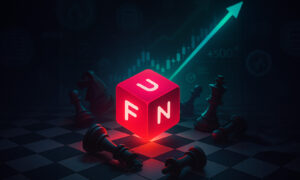Blockchain is a distributed ledger continuously updated by connected nodes that host carbon copies of the ledger. The number of nodes on a blockchain is touted as an indication of its security. The more nodes, the more difficult it is to attack the network or shut it down. Furthermore, the higher the number of nodes, the more decentralized the system becomes. This means that no single entity can control all of the nodes in a blockchain network and make changes to the ledger without anyone noticing.
While the above sounds very practical and functional, an emergent aspect needs to be addressed to help blockchain technology continue scaling. In recent years, the blockchain ecosystem has grown exponentially, with legacy networks like Bitcoin and Ethereum leading from the front. As the value of these platform-native tokens rose, running nodes on these networks became expensive, resulting in concentrations of deep-pocketed investors and mining operations with significant power over network activity. This, in turn, led to specific groups running one or multiple nodes.
The current miner-centric network relies on a limited number of users (or organizations) running full validatory nodes that process every transaction. However, they aren’t involved in the construction of the blockchain itself. Instead, much smaller groups of users, referred to as ‘miners,’ are responsible for running complete nodes (validatory and mining nodes).
Nodes On Existing Networks Aren’t Truly Distributed
While node count is important, the distribution of these nodes, both geographically and between entities, also matters. A blockchain network can only offer end-to-end security when nodes are run by different people, and not accumulated in bigger pools. With more nodes distributed across hundreds of distinct users, the underlying network becomes more resilient against malicious attempts like the infamous 51% attacks previously postulated to be a severe threat.
The consensus mechanism used by the blockchain is another critical component of blockchain security. For instance, running a full node on a network that uses Proof-of-Work (PoW) consensus is costly. You’ll need high-end equipment to perform the computational tasks directly connected to the mining rewards you earn. As such, participating as a full node in any existing network like Bitcoin, for example, isn’t for everyone. Since the initial costs are too high, only a few select entities run full nodes, leading to an increased concentration of power over time.
Likewise, when it comes to PoS (Proof-of-Stake) networks like Ethereum, the probability of becoming a full node is determined by your overall ‘stake’ in the network. The higher the number of ETH tokens you own, the better the chances of you being able to validate new blocks and help construct the Ethereum blockchain. Then again, depending on the network’s popularity, initial costs may vary significantly.
Either way, both PoW and PoS networks don’t offer a level playing field for users. Since only a limited number of users are part of the blockchain network, the overall security is at risk. Besides, the core idea of blockchain is decentralization, transparency, fairness, and inclusivity. Existing blockchain networks with a diverse range of nodes like authority nodes, validator nodes, light nodes, full nodes, archival nodes, staking nodes, and others, are not meaningfully helping the average user enter the picture.
A ‘Node’ For Everyone
With the idea of operating a full node on legacy networks becoming a distant dream for many, a new wave of blockchain solutions has entered the ecosystem, designed to reintroduce the concept of decentralization and equal opportunities for all.
Minima is a third-generation blockchain project that has successfully developed a network where every user is an equal and ‘full’ member of the ecosystem. Through its ultra-lean blockchain protocol that works seamlessly on mobile and IoT devices, Minima is the first-of-its-kind blockchain network where users can run full nodes atop of existing infrastructure they already own, including their smartphones.
Not only does the Minima blockchain address the rising climate concerns that have become a fundamental problem of PoW and PoS-based networks, but it also ensures true decentralization by removing paid miners from the process. This means that instead of miners, users themselves will be responsible for securing the network.
To achieve this feat, Minima uses a Tx-PoW consensus mechanism and two separate layers. Layer 1, known as Minima, acts as the verification layer, while Layer 2, known as Maxima, acts as the transactional layer. By combining all of these, Minima delivers ample benefits, including low transaction costs, extreme scalability, censorship resistance, security, and inclusiveness while remaining decentralized, autonomous, and accountable.
Compared to other blockchains, Minima has emerged as the only new-age blockchain that solves the blockchain trilemma of speed, security, and scalability. Its ultra-lean mobile protocol is lightweight and small enough to run as a dedicated application on any smartphone or IoT device, making it easily accessible and straightforward to use.



































